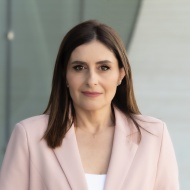During his first press briefing after a tumultuous 15 months at the helm of what is probably the biggest contributor to the economy, the Cyprus Tourism Organisation board Chairman said that we need to rediscover the tourist brand, yet remain focused on the quality of holidaymakers who reach the island.
“Cyprus has the second highest number of tourist arrivals per capita in the EU, after Austria and the first (at 7.8%) of the employment of the labour force in the hospitality industry.”
“We are also the biggest contributor to the economy, per capita, with tourism accounting for 11.4% of GDP or around €2 bln in annual revenues,” Loizou said, adding that Cyprus attracts higher-spending tourists than other destinations. “Why, then, are our arrival numbers stuck at present levels, and even retreating in the past years,” he asked.
Flanked by the CTO’s new Deputy Director Annita Demetriades, after her predecessor left unceremoniously due to diverse differences in management and other issue, Loizou said that apart from looking and planning ahead, the CTO itself is also undergoing changes of its own, in order to become more flexible.
“We need to put the right people in the right place,” he said, adding that the initial restructuring plan did not go ahead as expected, but is being implemented now as part of the government’s wider public sector reform.
Appealing to the state to increase its budget, that has been slashed from €60.5 mln five years ago to the present €23.5 mln, Loizou said that the CTO and its network of staff and overseas contributors, such as tourist offers and diplomats, need to focus on niche sectors, such as themed holidays, religious and medical tourism, sports and even oenogastronomic attractions. However, as with fellow board members Costas Koumis and Xenia Loizidou, the Chairman was confident the sector will recover and will not feel the impact so much from the demise of the rouble and the Russian economy.
Acknowleding that the Russian market had recently risen to command a 25% market share of all arrivals, Koumis said that Russian holidaymakers to the rest of Europe had fallen by 50% due to the crisis in Ukraine and the economy, but also due to the collapse of smaller tour operators.
“But in the case of Cyprus, this fall has been overturned and we have a 4.5% increase (to 640,000) from 2013 figures.”
Loizou also spoke of a new CTO, a new effective organization, which will become more modern and flexible by reducing bureaucracy, simplification of procedures, modernisation of the legislative framework, exemplary cooperation between board and staff, and implementing of good governance.
He stressed that there will be "transparent, impartial and full legitimacy procedures and full independence." The new CTO, he said, will have excellent cooperation with the Ministry of Commerce, the Ministry of Finance, the Auditor General and the Treasury for the procedures to be followed. Decisions on contracts will be taken by the Tenders Committee and the Internal Audit Service.
"We are closely monitoring the rouble because that is what will probably determine the outcome, which seems to have stabilised. The messages we are receiving is that there will be some reductions from tour operators, but this seems to be at a level that we can handle”, he said.
The gaps from the reduction numbers from the Russian market will be replaced from the U.K., Israel, Germany, Poland, France, the Czech Republic, central Europe, Scandinavia and Arab countries.
Referring to the German market, Loizou said he was confident that with the addition of flights operated by Germania and Germanwings, the numbers will be good.
There is also interest from France, he added, due to events in countries such as Tunisia, Morocco, Egypt, with the French looking to Cyprus as a safe destination.
The most encouraging, he said, is that although Cyprus depended on some countries, this is changing and other countries are put on the spotlight such as Israel, Poland and the Arab countries.
Based on the results of the Passengers Survey, arrivals in February totalled 50,709, compared with 45,227 in February 2014, while January 2015 was also up 2.7%, year-on-year.
Tourist arrivals have been onan upward trend since last December after a drop in September, October and November, suggesting that there is a huge market for winter tourism.
Source: Financial Mirror













